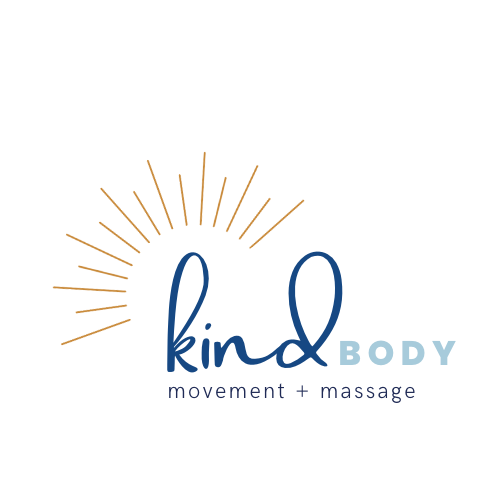The One Stretch I Do Every Day
How to get full-body benefits from one simple stretch.
Sometimes I link to products I love. As an Amazon Associate, I earn a commission from qualifying purchases.
Want to know the one stretch I do every day, multiple times a day?
(I’m sure you do. Why else would you be here, on this blog post?)
This simple stretch helps me…
Feel taller
Take a load off my knees
Keep neck pain at bay
Care for my heart, and
Improve my squat form.
It might also help you…
Manage foot pain or plantar fasciitis
Help with high arches and stiff feet
Ward off lower back pain, and
Move your whole body more efficiently.
Sounds like a magic pill, right?
Only it’s not magic—it’s biomechanics.
Now that I’ve sufficiently built it up in your mind, I can reveal the stretch in question.
[drumroll please]
The Calf Stretch
Let’s dive into the calves and why the range of motion of your ankle joint can be so important for the way your body moves as a whole.
In this post…
What even are the calf muscles?
Why are my calves tight?
Why is the downhill shape a problem?
Are you walking downhill in your sleep?
How can my tight calves affect the way the rest of my body moves?
What about the other benefits of the calf stretch?
How to stretch your calves.
When to calf stretch.
Conclusion.
What even are the calf muscles?
When we talk about stretching the calves, we’re actually talking about two muscles: the gastrocnemius and the soleus.
While the gastrocnemius sits closer to the surface, the soleus sits underneath it, closer to the bone. The gastrocnemius starts up at the back of the thigh bone and the soleus begins on the back of the shin bones. Both muscles team up and interweave to form the Achilles tendon, which then attaches to the heel bone.
This means that both muscles help to move the ankle joint into plantar flexion (think: pointing your toes like a ballet dancer) and the gastrocnemius helps to bend the knee joint.
In order to stretch the calves, we need to move the ankle joint into dorsiflexion (think: pulling your toes up and back toward your shin). To target the gastrocnemius, we can do this with the knee joint straight. To specifically target the soleus, we need to dorsiflex with the knee bent.
Even these men’s sneakers have a heel. This person’s foot/ankle is now casted into the downhill shape.
Why are my calves tight?
Our bodies want to help us do what we do better. When we put our bodies into a certain shape repeatedly, our tissues actually change to adapt to that shape.
Our ankle joints have the ability to move through a whole range of shapes. For the purposes of this post, though, I want to focus on two shapes in particular: the uphill shape and the downhill shape.
The ankle takes the uphill shape when the ball of the foot sits higher than the heel (like what happens when you walk up a hill barefoot). This is similar to dorsiflexion.
The ankle takes the downhill shape when the ball of the foot sits lower than the heel (like what happens when you walk down a hill barefoot). This is similar to plantar flexion.
Which shape do you think your ankle spends more time in?
Unless you’re spending the majority of your time hiking barefoot up the mountains, you’re probably in the downhill shape most of the time.
Here’s a few things that keep our ankles and feet “casted” into a constant downhill shape:
Wearing positive heeled shoes (even most gym shoes have a heel)
Wearing shoes with stiff, inflexible soles
Sitting (especially while wearing those positive heeled shoes)
Walking on predictable, flat terrain
This guy is walking downhill. If we always only walked downhill, our bodies wouldn’t feel very good.
Why is the downhill shape a problem?
Well, it’s not. There’s nothing inherently wrong with the ball of your foot sitting lower than your heel. The problem arises when the ankles stay in that position most of the time.
Here’s what happens: Muscles are really cool and complex and are made up of lots of smaller parts. Some of those smaller parts are called sarcomeres.
When a muscle contracts to produce force, it’s because the sarcomeres contracted. When a muscle stretches, it’s because the sarcomeres lengthened. Because our bodies are adaptive, sarcomeres can change and shorten if the associated muscles are commonly kept in their shortened position.
Thinking about the ankles and calves—when you keep your ankles in the downhill shape most of the time, the sarcomeres in your calf muscles get shorter. That’s your body’s way of maintaining that downhill shape without expending a whole lot of extra energy. As a result, those short and sticky sarcomeres make it harder for your muscles to move into the uphill shape.
Are you walking downhill in your sleep?
Have you ever stepped out of bed in the morning and heard your heels snap, crackle, or pop? Mine do it too sometimes. For some people, these pops and crackles correlate with pain and plantar fasciitis.
That popping sound is your body breaking out of its downhill cast, perhaps a little more violently than we might like. Not only are the ankles and feet moving out of their habitual downhill shape, they’re also being asked to bear the weight of your body when you stand up and take those first few morning steps to the bathroom.
Tip: circle your ankles before you get out of bed in the morning.
How can my tight calves affect the way the rest of my body moves?
Your tight calves are literally holding you back. To understand how your calves can affect the way the rest of your body moves, try this exercise:
Find your ankle angle:
Lie on your stomach in front of a mirror and bend your knees so your feet come off the ground.
Relax your feet and ankles. Look at the resting angle between your foot and your shin at the ankle joint. This shows your resting calf tension—remember that angle. (It’s probably greater than 90 degrees.)
Now stand up and try to maintain that same angle in your ankle joint.
A few things might happen: you could fall backwards, you could squeeze your tush to push your pelvis over your ankles, or your head, neck, and upper spine could curl forward to counter balance the weight.
Now imagine all the forces at play as you walk and move while your body tries to stay upright despite that calf tension.
Your tight calves have caused your upper spine, neck, and head to accelerate forward with every step you take (so you don’t fall backwards). As a result, the muscles in those parts that are way up high and far away from your calves have to tense to stabilize.
It’s something akin to repeated micro whiplash.
I say “micro whiplash” because it’s quite different than the whiplash that results from getting rear ended in a car. This “walking whiplash” occurs at a much slower speed (most of us walk at a speed of 3 miles per hour), repeatedly throughout the day.
This means that if we can reduce the angle of our “resting calf tension,” we can also lessen the loads on our necks, shoulders, and lower backs. If the upper spine doesn’t have to counter balance so much calf tension, we can stand more erect. And that’s why a calf stretch could help you feel taller.
Tip: All that whiplash talk might feel intense. Here’s an opportunity to practice gratitude and compassion towards our bodies: “No wonder my neck hurts. My body is working so hard to keep me upright.”
These folks are getting some vitamin uphill (albeit not as much as they could because their gym shoes have a positive heel).
What about the other benefits of the calf stretch?
Knees
If your ankle range of motion is restricted, your knees may end up working harder and taking on more of the movement. Adding more calf stretch can help lessen the load on your knee joints.
Heart
Think of your calves as the heart of your legs. The heart in your chest is responsible for pumping blood throughout the body. When your calf muscles contract, they help pump blood back up toward the heart. The more range of motion you have in your ankles, the more pump potential you have.
Squat Form
There are lots of ways to squat and most of them require a lot of dorsiflexion of the ankle joint (dorsiflexion is when your toes move closer to your shin, similar to the uphill shape I described above). By improving your ankle range of motion, you’ll find more freedom in your squat.
How to stretch your calves.
There are certainly many different ways to stretch your calves but I’m going to share my favorite in this post. I prefer this method for the calf stretch because, unlike other exercises, this one really does put your foot and ankle into the uphill shape (where the ball of the foot is higher than the heel).
How to Calf Stretch
Grab a half dome foam roller (You could also use a rolled yoga mat or a rolled blanket.)
Lightly rest the ball of one foot on the half dome and check in. Avoid thrusting your ribs.
Slowly step your other foot forward. Notice if the ball of your stretch foot begins to press down harder on the half dome (like you’re pressing the gas pedal). More pressure on the ball of the foot equals less uphill shape so keep it light and easy.
You can stay in this stretch for a while but if you need a starting recommendation, try 10-30 seconds to begin with. When you’re ready to exit, step the non-stretch foot back and step off the half dome. Feel the difference. Repeat on the other side.
When to calf stretch.
Although the calf stretch is an exercise, I hardly ever do it while I’m exercising. I’m always fitting it in while I’m doing other things—like while I’m doing the dishes or working at my standing desk. In fact, I keep my half dome in the kitchen because I’m in there so frequently.
Other times you can fit in a calf stretch:
While brushing your teeth
While waiting for water to boil
While waiting for your coffee to brew
There’s also plenty of “natural half domes” outside. Things like rocks, curbs, and tree roots can become your substitute half dome. If you’re hiking downhill, it could be a good idea to stop periodically and calf stretch on one of these natural items. I like to use what I can find to calf stretch while I watch my kids play outside.
Here I am calf stretching in the kitchen. ©KindBody Movement, LLC
Conclusion
Although the calves are part of the lower body, they can affect the way the rest of the body moves. Our modern sedentary lifestyles (and wardrobes) can restrict the movement potential of the ankle joints, thus increasing the loads placed on the muscles of our backs, shoulders, necks, and heads. As a result, the calf stretch can help mitigate pain and dysfunction in both the lower body and the upper body.
Remember, the calf stretch is a supplement—a vitamin. You’re going to get the fullest amount of movement nutrition by taking your daily vitamin while also consuming a varied movement diet. And when we think about the ankles and calves, specifically, that would include plenty of time spent barefoot, squatting in a way that’s accessible to you, and walking over varied terrain and inclines.
This particular exercise can help you improve your range of motion but your movement diet as a whole will help you maintain that improved range of motion.











